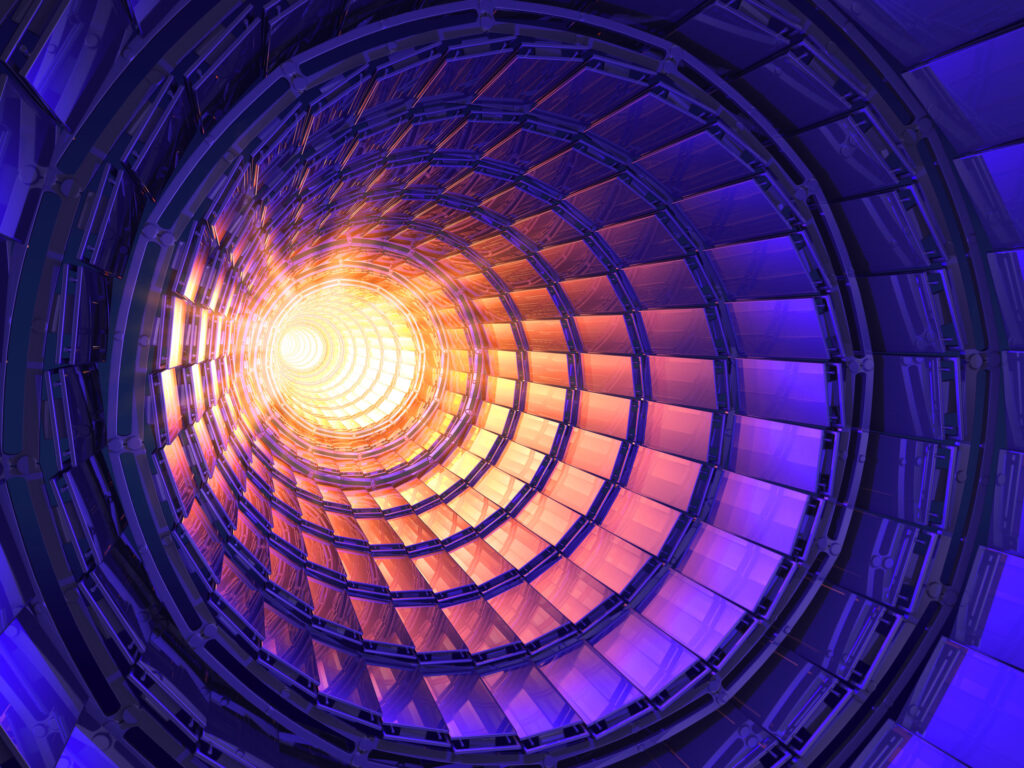Fulfilling the dream of medieval alchemists, physicists have observed the transmutation of lead into gold—through nuclear physics at the Large Hadron Collider (LHC), the world’s most powerful particle accelerator.
For centuries, this idea of turning lead into gold—chrysopoeia—seemed out of reach. The two metals share a similar density, but modern science later proved they are distinct elements and chemically non-interchangeable.
However, gold can be produced, albeit in microscopic amounts, at the heart of ALICE (A Large Ion Collider Experiment), one of the four main instruments on the LHC at CERN, the European Organization for Nuclear Research.
The ALICE experiment is dedicated to heavy-ion physics and investigates matter under extreme energy densities. During high-energy collisions of lead nuclei at the LHC, scientists can momentarily recreate quark–gluon plasma, a state of matter that existed just millionths of a second after the Big Bang.
Still, gold is not born from these direct crashes. Instead, it forms in a more subtle scenario—when lead nuclei almost collide head-on, but miss.
“It is impressive to see that our detectors can handle head-on collisions producing thousands of particles, while also being sensitive to collisions where only a few particles are produced at a time, enabling the study of electromagnetic ‘nuclear transmutation’ processes,” ALICE spokesperson Marco Van Leeuwen, said in a statement.
In near-miss encounters, intense electromagnetic fields surrounding the rapidly moving lead nuclei generate brief pulses of photons. T
When these photons interact with nuclei, they cause a phenomenon known as electromagnetic dissociation, in which protons and neutrons are ejected from a nucleus.
In rare cases, three protons are knocked out of a lead nucleus, leaving behind gold in its place.
The ALICE team used specialized instruments known as Zero Degree Calorimeters (ZDC) to measure these rare events.
By detecting the number of protons and neutrons ejected in collisions, researchers were able to distinguish between the creation of other heavy elements like thallium and mercury—and gold.
Sadly, the resulting gold nuclei do not stick around for long. Traveling at nearly the speed of light, they smash into the walls of the collider or its components and disintegrate almost instantly into smaller particles.
Still, the numbers are impressive: during Run 2 of the LHC (2015–2018), about 86 billion gold nuclei were produced. Run 3 has already nearly doubled that count.
Yet despite this, the total mass of gold created is vanishingly small—trillions of times less than what would be needed to make, say, a wedding ring.
While that may dash the hopes of some, the experiment opens a new window into how elements are formed and how electromagnetic fields can manipulate atomic nuclei.
It also highlights the extraordinary sensitivity of the ALICE detector, which was designed not for gold-making, but to probe the universe’s earliest moments.
Do you have a tip on a science story that Newsweek should be covering? Do you have a question about particle physics? Let us know via [email protected].
Reference
ALICE Collaboration, Acharya, S., Agarwal, A., Aglieri Rinella, G., Aglietta, L., Agnello, M., Agrawal, N., Ahammed, Z., Ahmad, S., Ahn, S. U., Ahuja, I., Akindinov, A., Akishina, V., Al-Turany, M., Aleksandrov, D., Alessandro, B., Alfanda, H. M., Alfaro Molina, R., Ali, B., … Zurlo, N. (2025). Proton emission in ultraperipheral Pb-Pb collisions at $sqrt{{s}_{NN}}=5.02$ TeV. Physical Review C, 111(5). https://doi.org/10.1103/PhysRevC.111.054906
Read the full article here
